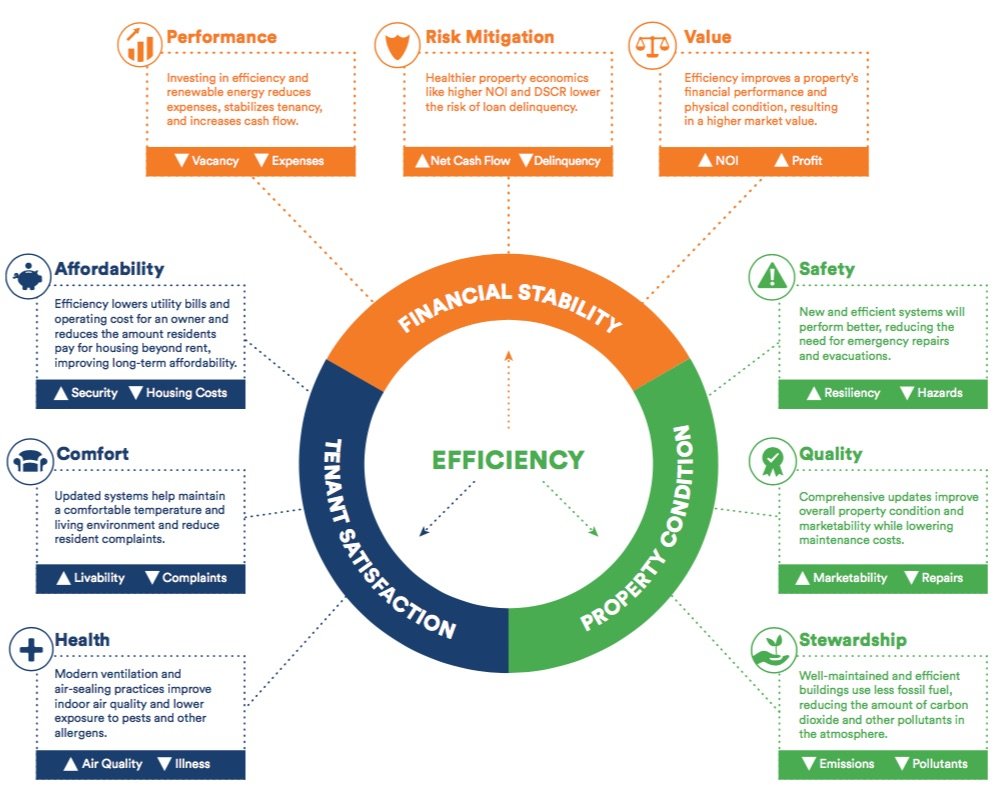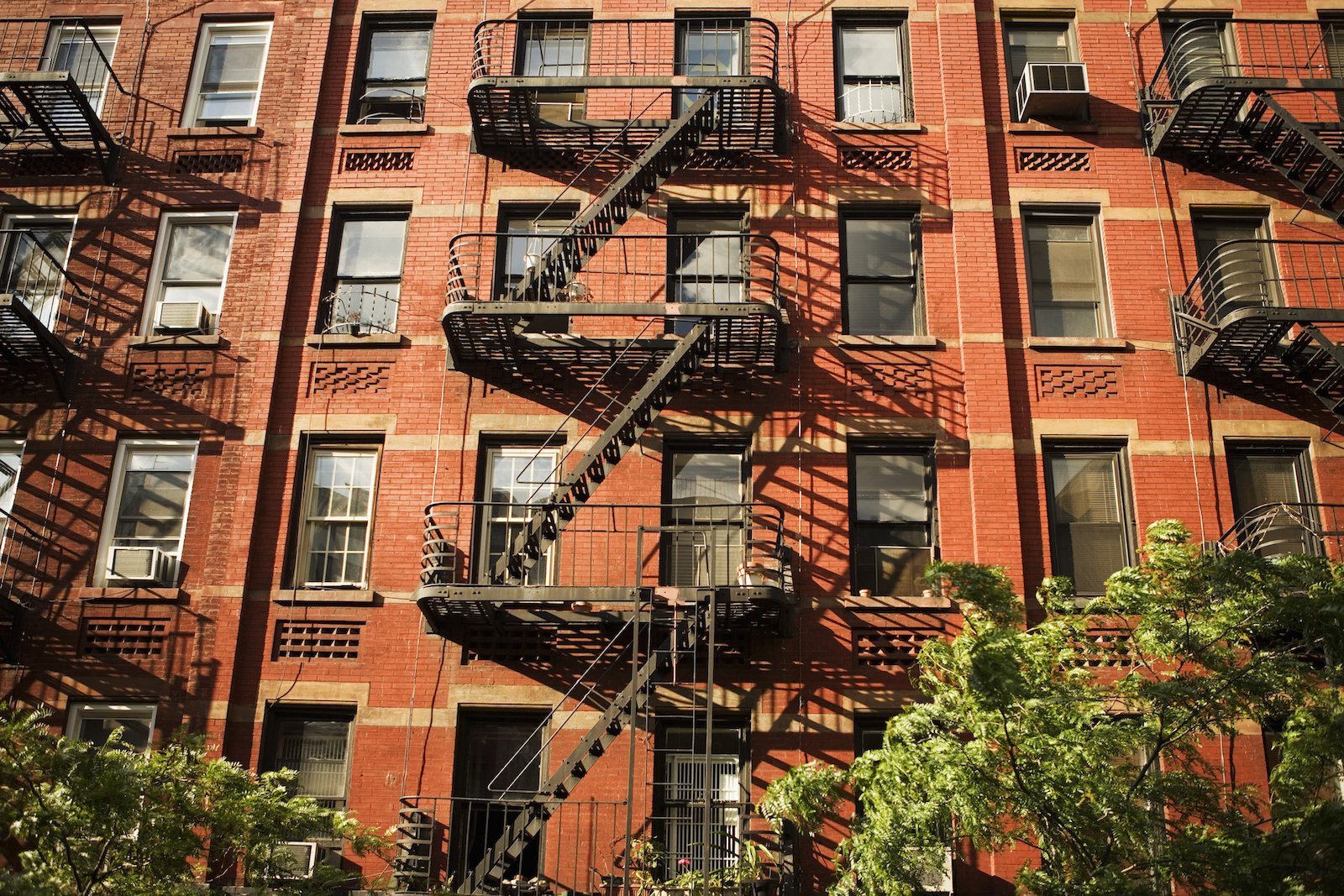The methods and materials for energy-efficient buildings are well known and are, for the most part, accepted. The biggest challenges arise in the financing. While energy efficiency pays for itself, it’s sometimes difficult for lenders to understand this added value and feel comfortable making loans that cover the related costs.
Underwriting Efficiency is a new handbook for lenders and borrowers by the Community Preservation Corporation. It explains in great detail how multifamily buildings can be upgraded to reduce energy and water use without costing owners, lenders, or occupants more money. It also shows the benefits for each.
Building owners have their greatest access to funds when they build, purchase, or refinance a property. It makes sense to take advantage of this beneficial timing rather than try to package efficiency improvements as a separate deal, transaction, or loan. By financing energy improvements during a planned financial transaction, building owners access the lowest-cost, longest-term capital through mortgage loans. As a result, occupants benefit from lower rents and the inherent health and comfort benefits of energy-efficient buildings, making it easier for owners to attract and retain good renters.
According to the authors, “In every transaction, mortgage lenders have an opportunity to show building owners how to improve their financial performance by investing in building efficiency. By emphasizing the impact of efficiency on loan performance and incentivizing owners to pursue efficiency, lenders can encourage investments that will strengthen cash flow, improve property value, and lower the risk of delinquency. This benefits both lenders and owners.”
Lenders, too, have much to gain from efficiency. Properties with an efficiency component show better financial performance, embody lower risk and achieve a higher market value. Lenders increase their revenue from larger loans, more interest and higher fees, while the overall impact to borrowers is nil—simply a shift of cost from utility payments to debt service. It’s an indisputable win-win situation.
Timely planning pays. Lenders can promote efficiency by educating borrowers about financing opportunities, helping to identify efficiency upgrades, and connecting borrowers to incentive and rebate programs well in advance of the transaction.

Underwriting Efficiency shows examples of three levels of efficiency improvements. The “Simple Upgrade” example shows how $500 to $1500 per unit can pay for installation of low-flow plumbing fixtures and LED lights, fix water leaks, replace weatherstripping, and tuneup boilers, etc. The “Moderate Renovation” package includes domestic water heater replacement, roof insulation, new ENERGY STAR appliances, window replacement, and more. The cost for this mid-level improvement might range from $1,000 to $8,000 per unit. The scope of the “Substantial Improvements” package might include major structural upgrades, mechanical equipment replacement, and even on-site electricity generation with solar panels or combined heat and power systems. This most ambitious example can run anywhere from $5,000 to $20,000 per unit. The cost per square foot and the percentage of energy savings are shown for each specific improvement.
Beyond these practices and products, the handbook lays out a process that can be followed by either lenders or borrowers. One important early step is energy benchmarking that identifies where efficiency improvements can have the most impact. This could be specific efficiency measures within a building or for entire buildings. Benchmarking is already underway in some cities as a way to target buildings that are good candidates for improvement projects.
The handbook offers financial examples and case studies showing how energy and water improvements increase net operating income and boost property value while maintaining the same loan-to-value ratio as the unimproved building.
While most of the examples refer to refinancing and improving existing multifamily buildings, the same principles and methods would apply to new building development. It’s essential to address efficiency upgrades early in the process. Housing affordability is important and including energy upgrades can make renting an apartment in a multifamily building accessible to more people. This handbook is a valuable tool for lenders, borrowers and policy makers to improve affordability, health, comfort, and stability in multifamily buildings.

